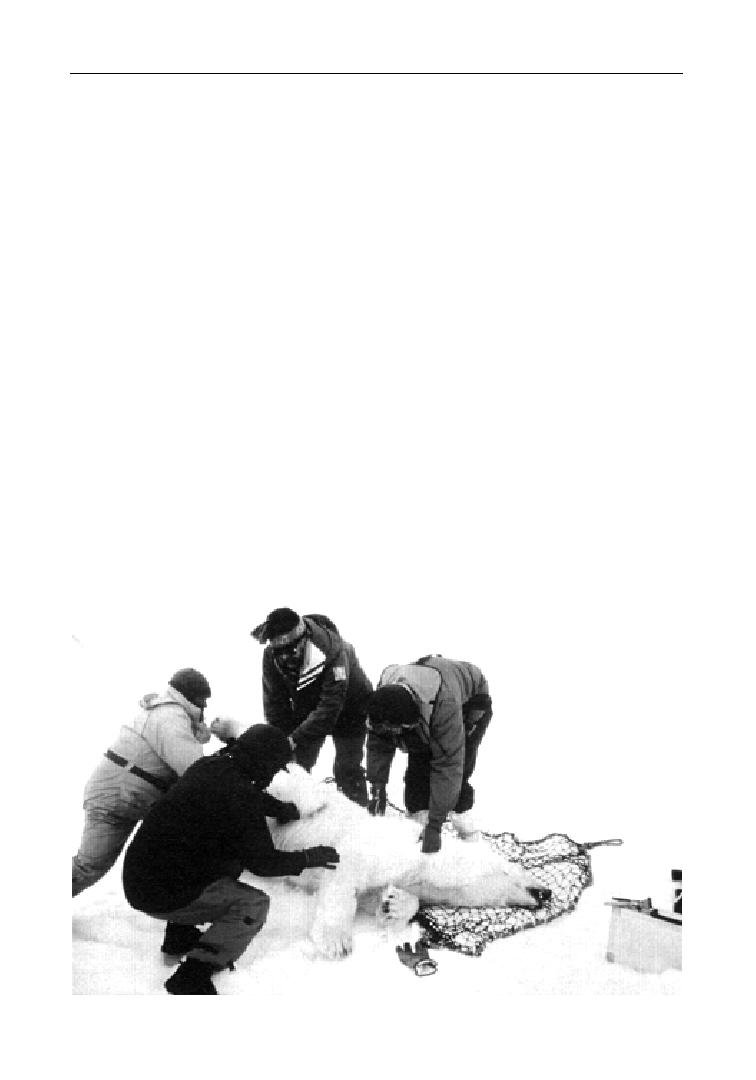
Ecology of Marine Mammals
ships, the crews watched for signs of marine mammals. During at least 25% of
the observation time, fog and other atmospheric conditions limited visibility
to a few hundred meters from the ships and precluded helicopter flights.
When animals were seen, their species, number and behavior were recorded.
Polar bears were captured using helicopters and standard immobilization tech-
niques. For each animal, sex was determined, uniquely numbered ear tags
attached, and matching tattoos applied to the left and right upper lip for subse-
quent identification of recaptured individuals. Age was derived by counting
annuli in the cementum of an extracted vestigial premolar tooth.
Animals were weighed using an electronic scale suspended from an alumi-
num tripod. Blood samples, adipose tissue biopsies from superficial depots,
and milk samples were collected for subsequent contaminant assay and DNA
sampling. Satellite-communicating radio collars were fitted to adult female
bears to allow us to track them after capture.
We saw 12 polar bears and 15 additional sets of tracks on the expedition. Of
the bears sighted, seven were captured. The remaining five were unavailable
for capture because climatic conditions or extensive open water at the time
made capture unsafe for both the bears and us. Those not captured included
three solitary bears and a female with a yearling cub. We captured and sam-
pled two families, one juvenile male and one juvenile female. None of the
bears handled had previously been marked in any of the ongoing national
polar bear studies along the periphery of the Arctic Ocean.
Captured bear
Both adult females were fitted with a radio transmitter that communicated
being prepared
with the Service Argos satellites. These radios allowed us to obtain informa-
for weighing.
57



 Previous Page
Previous Page
